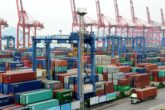October 30, 2018
Navigating a new chapter in the US-Philippines’ ‘Long Friendship’
In the Philippines, nearly a year after President Trump first sketched his Free and Open Indo-Pacific policy at the 2017 APEC CEO Summit, uncertainty about how the United States will operationalize its vision lingers. Beijing’s vaunted infusion of capital, and influence across all dimensions of Philippine society, including through its multi-billion dollar investments into key Build, Build, Build infrastructure projects, has amplified this uncertainty. Indeed, the common refrain in Manila is that while the United States remains a good friend, China will always be the Philippines’ watchful, at times menacing, northern neighbor.
As the United States operationalizes its Indo-Pacific policy, it will need to ever more conscientiously strike a balance between providing assurances of the durability of US commitment to the region and encouraging Philippine autonomy, particularly amidst Chinese incursions. The United States will also need to grapple with how best to promote its positive agenda for a rules-based order in a way that not only safeguards its own interests but also directly appeals to the aspiring middle classes of the Philippines and beyond.
The Indo-Pacific framework, at its core, underscores the shift in the global economic center of gravity and other dramatic changes that are afoot both in the Philippines and across Southeast Asia. Yet, despite the sharp contrast between today’s mercurial leaders and their predecessors, the elements of continuity in policy dwarf elements of change both in the United States and the Philippines. Across the diplomatic, economic, and security domains, the American commitment to the rule of law, freedom of navigation, sustainable economic development, and good governance both in the Philippines and the region writ large remains stronger than ever before.
Diplomatically, the United States’ Indo-Pacific policy in Southeast Asia is predicated on ASEAN centrality, as the Deputy Secretary of State recently highlighted at the ASEAN Ministerial meeting. At the same time, while ASEAN is most powerful when it speaks with a unified voice, there is also growing utility in minilateralism and more nimble, ad hoc cooperation below the ASEAN level. The Philippines’ trilateral air and maritime patrols with Indonesia and Malaysia in the Sulu and Celebes Seas offer a case in point. Moving forward, the United States should not only support ASEAN cohesion but also smaller, effective coalitions of the willing to showcase American and regional commitment to a rules-based order.
Read the full article on the Stratbase ADR Institute website.
More from CNAS
-
Ziemba: Struck By Energy Deal Between India & Saudi Arabia
Saudi Arabia and India have agreed to deepen energy ties and cooperate more closely on tourism and technology as the countries seek to strengthen relations at a time of turbul...
By Rachel Ziemba
-
Trump’s Crackdown on Foreign Students Is a Gift to China
When top global talent no longer sees America as a stable, long-term bet — in light of both visa and research funding insecurity — many will vote with their feet....
By Jordan Schneider
-
Trump Administration Realises That The Tariff Strategy Has Backfired: Lisa Curtis
Trump administration realises that the tariff strategy has backfired, says Lisa Curtis, senior fellow and program director at the Center for a New American Security.Watch the ...
By Lisa Curtis
-
Ep 187: Richard Fontaine on the “Reverse Kissinger”
Richard Fontaine, CEO of the Center for a New American Security (CNAS) and co-author of No Limits? The China-Russia Relationship and U.S. Foreign Policy, joins the show to dis...
By Richard Fontaine




